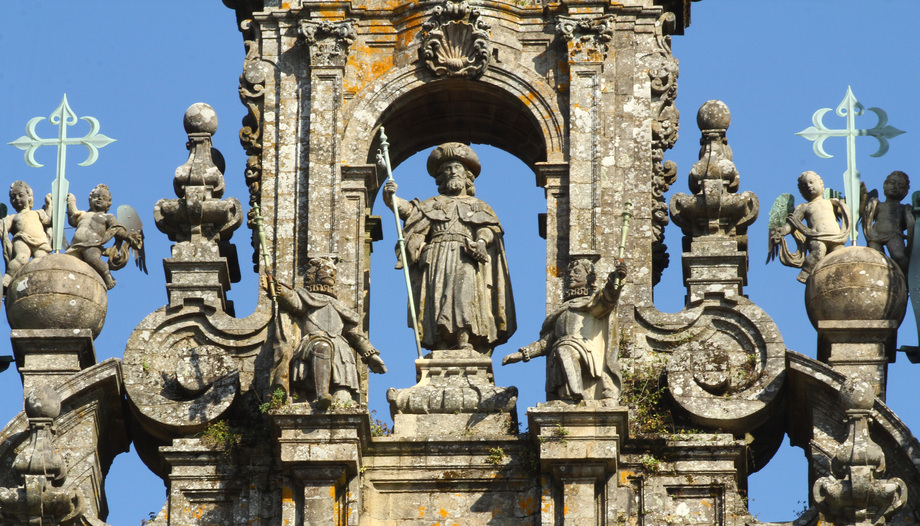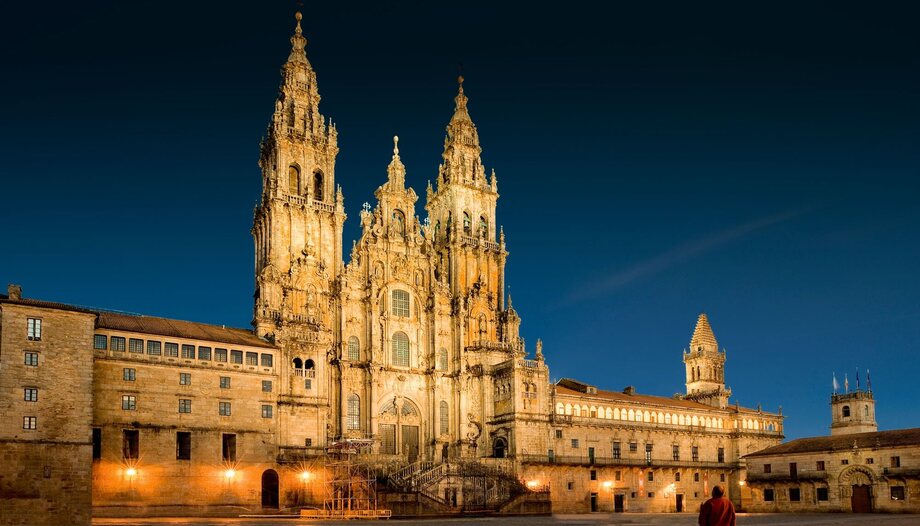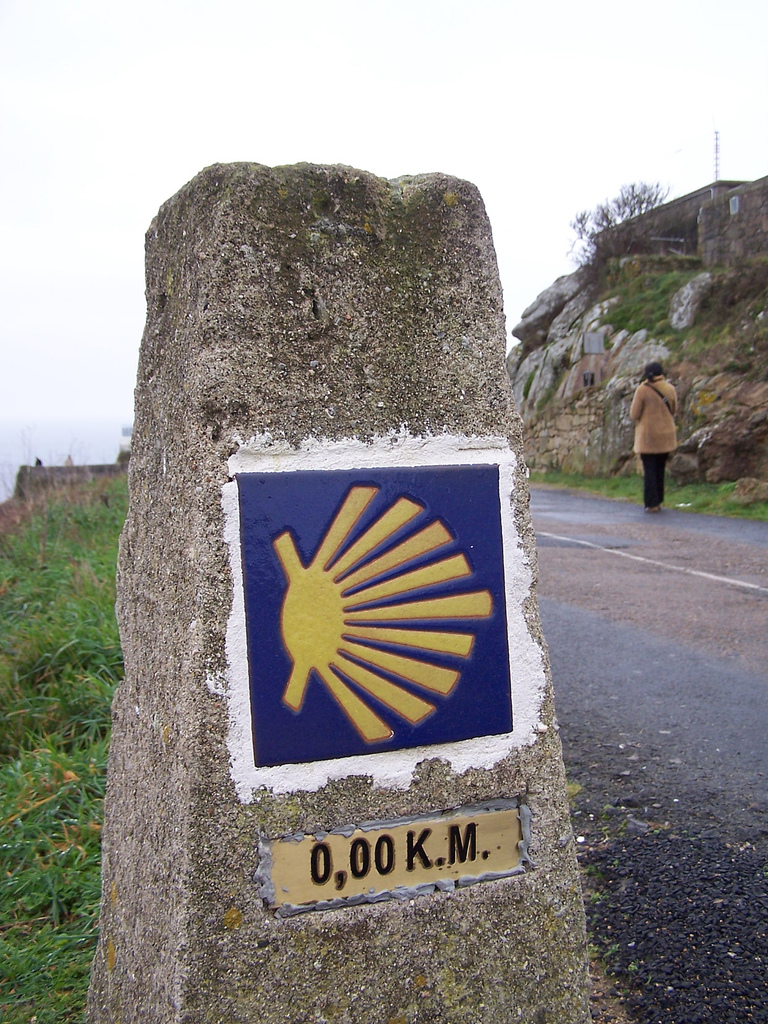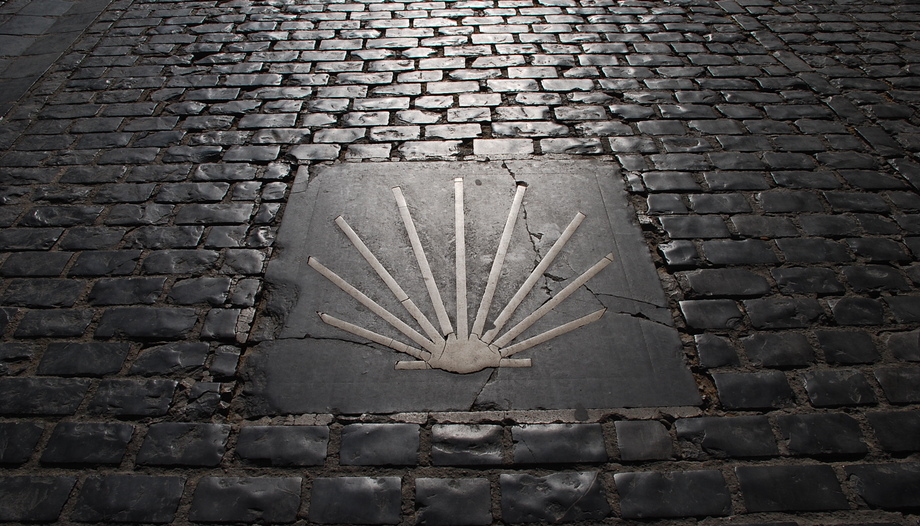The pilgrim, in a broad sense, is a man on a journey. It is characteristic of the pilgrim, in the first place, not to feel himself master of the land he treads on, because, as soon as he removes his feet from it, he has to worry about the ground he has yet to cover. The pilgrim goes ahead on the road, in order to reach a goal.
Strictly speaking, on the other hand, it is the one who goes to or returns from Santiago. Dante Alighieri distinguished between those who set out on the road to Santiago de Compostela, and the "Palmeros", who were on their way to Santiago de Compostela. Holy Land. Both were distinguished from the "Romeros", who went to Rome to visit the tombs of the Apostles St. Peter and St. Paul. Only those going to or returning from Santiago were considered "pilgrims".
Certainly in Dante's time, the Road to Santiago de Compostela was a spiritual path, a path of penance, in search of a certain forgiveness, whether civil or religious.
Camino de Santiago, the way of the spirit
Precisely John Paul II, on his first pilgrimage to Santiago, in 1982, focused on the transcendent vision of the Way of St. James. From there he addressed some words to Europe, asking it not to forget its roots, but to recover those values that made its history glorious and its presence in other continents beneficial. With these words he called on it to rebuild its spiritual unity.
That is why the Archbishop of Santiago, in his Pastoral Letter "Salt of your land", with which he wanted to prepare the Holy Year of 2021, says that the Way of St. James is a path of the spirit of the human person, which rebels against the danger of disappearing under the sphere of materialism.
The beginning of the pilgrimages to Santiago
The beginning of the pilgrimages took place in the ninth century, shortly after the discovery of the tomb with the remains of the apostle and Athanasius and Theodore, two of his disciples. As soon as King Alfonso II the Chaste heard about it, through the embassy of the bishop of Iria Flavia Teodomiro, the king went to Santiago with his family, thus becoming the first pilgrims.
In the tenth and eleventh centuries the number of pilgrims increased, and in this line continued during the thirteenth and fourteenth centuries. However, in the years prior to Covid 19, the number of those arriving at the tomb of the apostle St. James the Greater was much greater than it had been throughout history.
Motivations of traditional pilgrims
The road is destined to leave a serious impression on the pilgrim, to the point of influencing his interiority, to lead him to reflection and, in this way, to make him meet himself.
As a consequence, the change that takes place in the pilgrim has to be such that he becomes a deeply renewed man. It is conversion that makes him change not only in the thoughts that he harbors in his mind, but also in order to be consistent in his own life. Even if the difficulty of the journey makes one sad, the return, once that experience has been lived, is an explosion of true joy.
Normally the pilgrimage to Santiago sought forgiveness for one's own sins, and at the same time the intercession of the apostle was requested to obtain forgiveness for the sins of the pilgrim's relatives. On other occasions what was sought was to fulfill the civil penalty that had been imposed on them. There were also those who fulfilled a vow they had made while making the pilgrimage. Finally, there were those who arrived in Santiago substituting for those who had the obligation to do so. Those who did so were called "pilgrims by commission".
The Road to Santiago today
Since 1993 there has been a great propaganda from the civil world, in order to get a large number of people to come to Santiago and visit the city. Hence the religious sense of pilgrimage is not common to all those who come to Santiago, and especially to those who go there.
Among those who are starting out, there is no lack of those who are trying to change the system of ordinary life they have lived until then. Others seek to meet people who have the same desire to share their experiences. There are also those who, with a concern similar to that of their partner, wish to meet him or her along the way.
Attitudes more characteristic of the true pilgrim are those of those who try to contemplate the testimonies of those who have left their mark on the road, and try to live their spirituality, stimulated by this experience, in relation to the Creator and Lord of humanity, who has made everything they encounter along the way.
Others feel nostalgia for the love they had for Jesus and Our Lady when they were children, and wish to recover it, opening themselves to the calls of God, who makes himself felt more in solitude than in bustle. For this reason, they hope to achieve it along the Way of St. James.

Destination: inner freedom
Finally, the best attitude of today's pilgrim is that of one who lives his faith, received from God, and, taking into account that James was one of Jesus' favorite disciples, wants to go on pilgrimage to where the remains of the apostle are, in the hope that it will help him to imitate him and thus imitate the Master.
A few years ago, Pope John Paul II said in a letter addressed to Bishop Julián Barrio Barrio, on the eve of the Holy Year, on the occasion of the opening of the Holy Door: "The pilgrim is not simply a wayfarer: he is, more than anything else, a believer who, thanks to the experience of life, and with his gaze fixed on the fearlessness of the Apostle James, wants to follow Christ faithfully".
The Archbishop of Santiago, for his part, says in his Pastoral Letter "Get out of your land", on the occasion of the Compostela Holy Year 2021, that, although the geographical end of the pilgrimage is the House of Santiago, the goal of the pilgrimage is inner freedom, the freedom of the children of God, to which God the Father calls us.
Pilgrim symbols
The "Liber Sancti Jacobi" or "Codex Calixtinus" says that the way of the pilgrimage is good, but arduous. For this reason, at the beginning of the pilgrimage, the pilgrim receives a backpack and a walking stick.
The backpack is the symbol of "a small pantry, always open". In order to truly follow the Lord, the goods used in the pilgrimage must be used to help the poor. In an even more spiritual sense, we should accompany ourselves with "the rucksack of our life on our journey towards God, who wants to remain for us the companion on the path of our earthly existence.
Another object that the pilgrim receives before starting the journey is the staff or walking stick, to support him on uneven terrain and in the ascent and descent of the mountains, as well as for the pilgrim to defend himself from wolves and some dogs that may come his way along his journey. In the spiritual realm, it symbolizes the defense of those who walk, to overcome the difficulties and temptations that arise along the way.
The gourd is usually shown hanging from the traveler's staff. This one would find in some occasions sources to satisfy his thirst; but in others, as long as a person of the place where he was walking did not help him to solve his problem, giving him a little water, he would have to support his thirst in numerous occasions... In the gourd, the water is kept fresh, so that, if the case arises, it can also be useful to offer water in good conditions to a companion on the way. The gourd also has a spiritual meaning. In the biblical tradition it signifies the inner life, which conveys a certain scent of perfume, indicating the purity of heart of those who live their faith.
Finally, the scallop shell that the pilgrim takes home is used to drink water on the return journey, and also becomes a testimony of having made the pilgrimage.
The "Liber Sancti Jacobi" says that the two shells of the mollusk serve the pilgrim as armor for the Christian's own defense. They are like the two aspects of charity: love of God and love of neighbor, an excellent fruit of the pilgrimage.
Pilgrimage and Jubilee
The Compostelan Jubilee is intimately related to pilgrimage. It is true that, even if it is not the time of Jubilee, pilgrimage can be extremely useful.
Pope Calixtus II was the first to grant a Jubilee to the Diocese of Santiago de Compostela, with which he granted in 1122 many indulgences for those who made the pilgrimage to Santiago. Rome had also granted occasional Jubilees, at least in the years 1000, 1100 and 1200, like the one granted by Calixtus II. However, Calixtus II, far from surprising us, seems very logical, since, when he was archbishop of Vienne in the Delphinate, he must have visited Santiago on more than one occasion. In fact, his brother Raymond of Burgundy was Count of Galicia; and Guido of Burgundy himself, known since 1119 as Pope Callixtus II, attended the burial of Raymond, whose remains are today in the Chapel of the Relics in the Cathedral.

In the year 1181, by means of the Bull "Regis Aeterni", Pope Alexander III gave stability to the Compostelan Jubilee, turning into Jubilee years all those in which the feast of St. James on July 25th fell on a Sunday.
Looking at the practical realization of the Compostelan Jubilee, throughout history it has always been held normally, even when it coincided with the Roman Jubilee and the Holy See used to suspend local indulgences, so that they could participate in the Jubilee of the Eternal City. However, Sixtus V established that, even if local indulgences were ordinarily suppressed, the Compostelan Jubilee would always be celebrated. Leo XIII ratified the same in his Bull "Deus Omnipotens": that what was established by Alexander III should never be cancelled or abrogated, but always valid and perpetually efficacious. Thus, ordinary Holy Years have always been celebrated, in periods of 5, 6, 5 and 11 years, and there have also been Extraordinary ones.
The road to Santiago, paradigm of the road of life
Since the road to Santiago is a road of faith, we must look for everything that means help for the believer who walks this path that leads to the encounter with the son of Zebedee and Salome, and brother of John.
In the first place, the believer, sensitive from faith to what he perceives in nature, becomes especially receptive, and even sublimates what is meant by the fragrance of the fields, the richness of the water flowing from the mountain, the beauty and perfume of the flowers, and the joyful movement of the animals enjoying freedom,
On the other hand, the pilgrim meets along the days of his journey some companions who share his own path, with whom he crosses paths on more than one occasion. It is logical to hope that, both along the way and at the end of the day, they will meet again in the albergues. If a closer relationship is required because of a physical problem, the pilgrim should see this as a call from God to help the companion in need.
On the other hand, if two or more pilgrims are staying in the same hostel, this is the best time to exchange experiences. The Holy Spirit will be the one who awakens in each pilgrim the response of faith and a lively hope.
Along the way, those who pass through it will find expressions of faith, often accompanied by artistic delicacies. Architects or lesser men built churches, where local people or strangers had the opportunity to live and express their faith. The footsteps of pilgrims, throughout history, also left their footprints there.
Today the wayfarer should find out at what times the churches are open and at what times of the day they celebrate the Eucharist, in order to strengthen his spirit by participating in the memorial of our Lord Jesus Christ, and thus receive Jesus himself in his heart.
In addition to the importance of participating in the Holy Mass, the pilgrim has enough time to live in solitude and to look upwards. Among the Saints, who enjoy the presence of God, the Virgin Mary, mother of Jesus and our mother, occupies a preferential place. To her we can say the Hail Mary, and even pray the Rosary, to meditate on the mysteries of the life of Christ and of his most holy mother. This Virgin Mary, who encouraged St. James in moments of weakness, also accompanies the pilgrim on his way to the tomb of the Apostle St. James.
Listening to the Lord during the Camino
The believer who walks towards this goal has plenty of time to be attentive to the Lord. God takes advantage of these moments of openness to make the opportune calls. If in the book of the Apocalypse, precisely when addressing an unfaithful Church, like that of Laodicea, Jesus says that he stands at the door and knocks, and that if anyone opens to him, he will come in and eat with him, how much more so if he is addressing a person in search, who is trying to be faithful to God and to mankind.

On one occasion, shortly after Jesus died, when two disciples were returning home to Emmaus, disillusioned by the death of the One in whom they had placed all their hope, He appeared to them and conversed with them, until He made Himself known. The Lord will want to enter into the interiority of the pilgrim, to guide him in his life. This will be possible because the Lord has not left us alone, but has sent us his Spirit, so that, as St. Paul says to the Ephesians, we may cry out to God, calling him Father, we may know the hope to which he calls us, and we may understand the riches of glory that God gives as an inheritance to his Saints.
At the end of the journey, the pilgrim should enter the Jacobean sanctuary and participate in the liturgy that will be celebrated there. The pilgrim arrives with a spirit of humility, and trying to pray with the heart, strengthened by the encounters with the Lord on the road just completed. If he receives the Sacrament of Penance, he will find the peace of the Spirit; and, in the Holy Years, the plenary indulgence, which will make him leave renewed, by divine grace.
The time after the pilgrimage
The paschal experience of the pilgrim along the road to Santiago will be confirmed by the testimony of the Apostle, the friend of the Lord, at his tomb. As a consequence, the pilgrim who was once a pilgrim of hope will have to bear witness in the future to his faith in the risen Christ, who is the foundation of our hope; and he will have a special interest in practicing love of God and neighbor.
The Archbishop of Santiago de Compostela, in his Pastoral Letter "Pilgrims of Faith and Witnesses of the Risen Christ," on the occasion of the Holy Year 2010, clearly expressed his thoughts on the matter. In trying to carry out his task, the pilgrim, who has allowed the Lord to purify his heart, will bear witness in the future to what he has seen and heard in his inner self.
To do this, without further delay, he must try to put into practice what he has lived along the way, and always be attentive to the word that the Lord wishes to address to him, and often receive in communion Christ himself, who is the pledge of future immortality.
Dean of the Santiago de Compostela Cathedral








